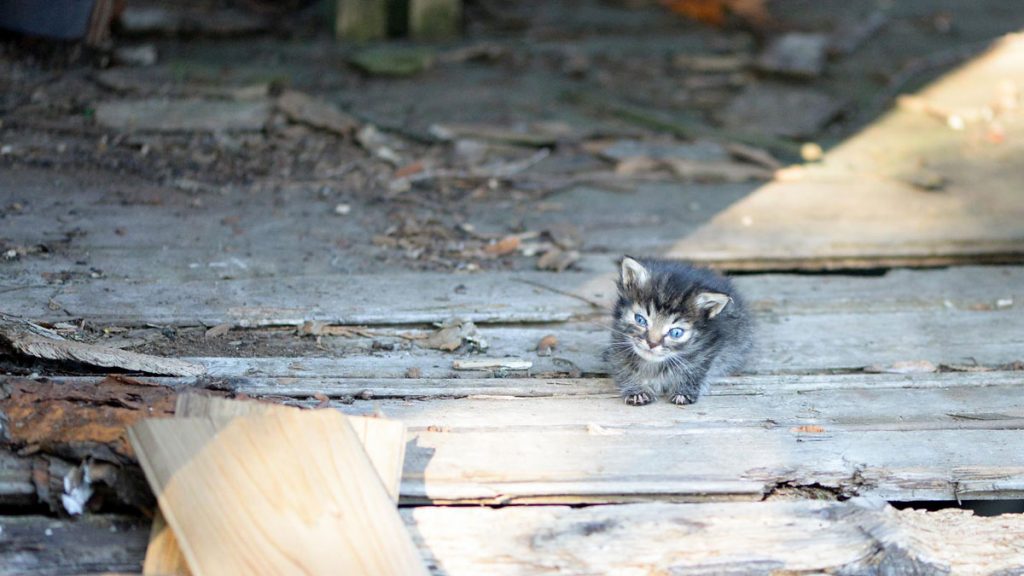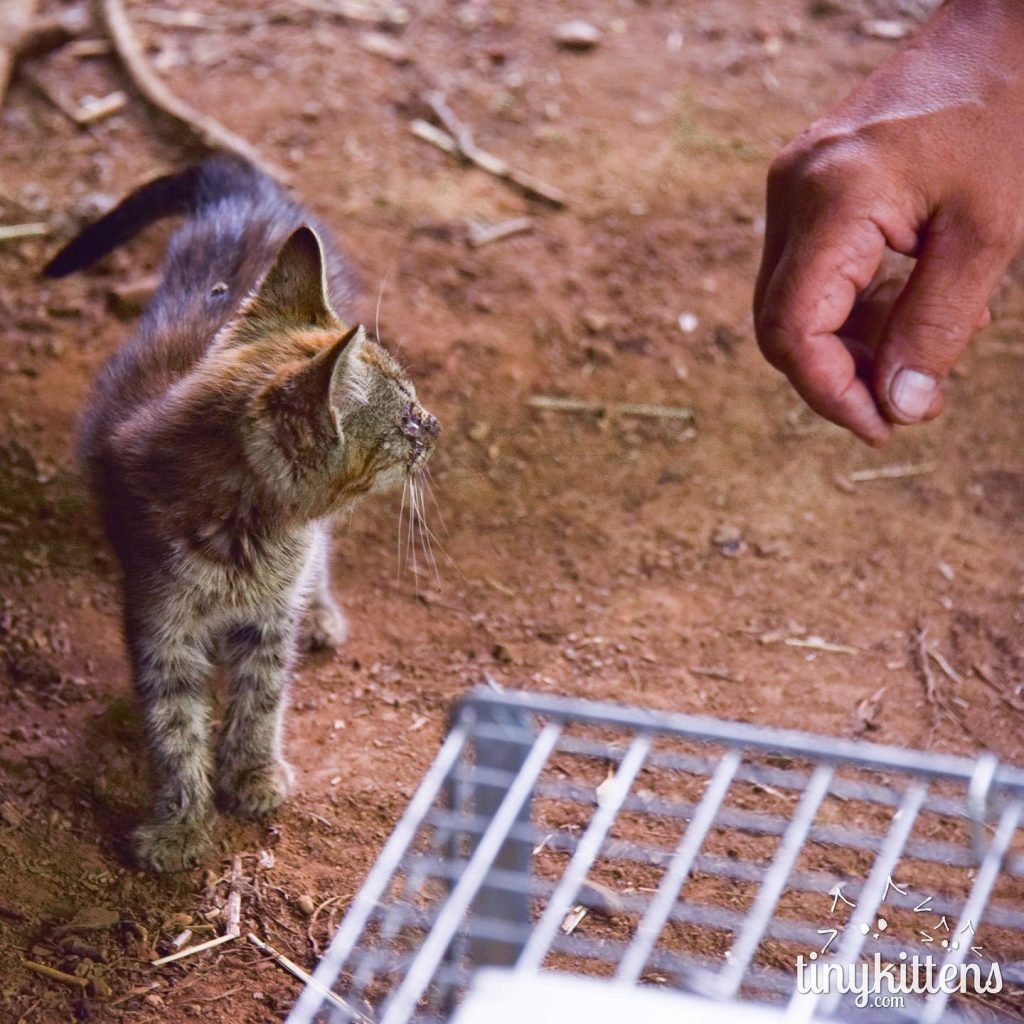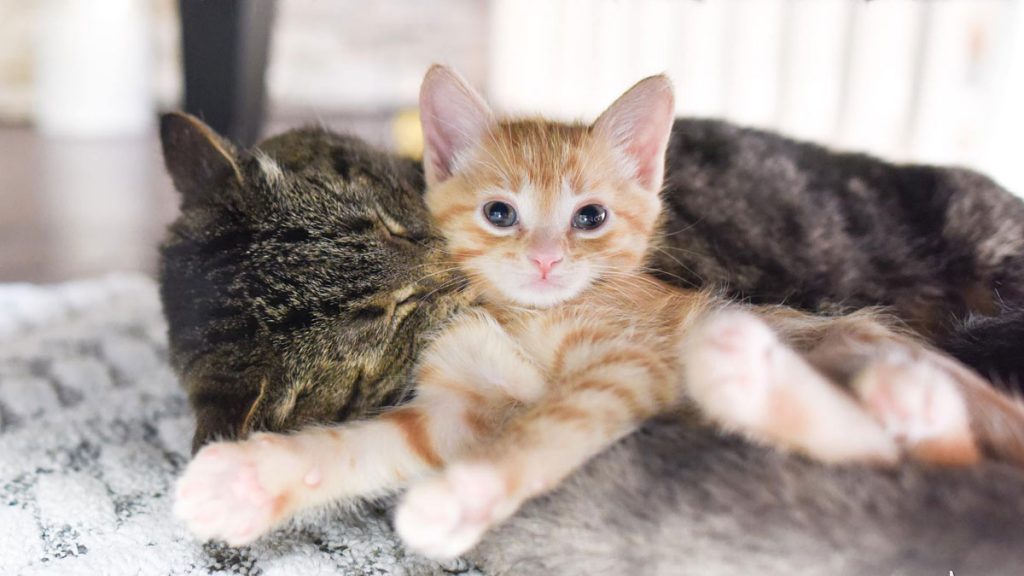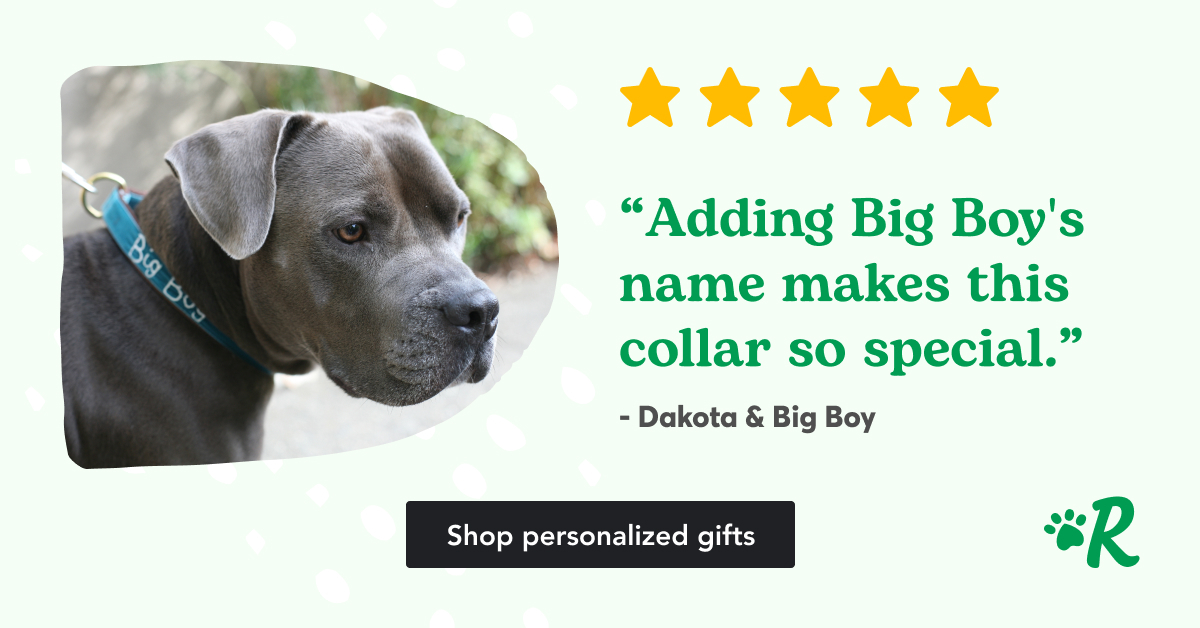After two months of loving care with a British Columbia rescue group, a “lost cause” feral cat was transformed into a roly-poly puff who is now living his best life indoors.
Moggy was sick and in need of eye surgery when he came into the care of Tiny Kittens, a feral cat rescue in Langley, B.C. The Snowshoe/Siamese mix cat was also FIV+ and likely would have been euthanized if he hadn’t been brought to Tiny Kittens.
Tiny Kittens founder Shelly Roche said she’s used to dealing with the scariest, most formidable cats, but when her team told her they were afraid of Moggy, she knew he was going to be a challenge.
Healing a Lifetime of Pain
“He’s probably one of our most intimidating cats because he would charge you,” said Roche. “He would hiss and spit and growl and he sounded really ferocious.”
Roche believes his behavior was caused by a combination of trauma and being in constant pain.
“We didn’t know if he could be happy living indoors, or if he could overcome past traumas and feel safe around humans. We had to work really hard to figure out how to connect with him, while having to provide the intensive medical care he needed,” she said.
Fast forward two months and Moggy was purring and rolling over for tummy rubs and was even playing.
“He became just the sweetest, most adorable cat,” said Roche. “He’s just a character.”
Moggy is now happily living indoors with the woman who found him.

Tiny Nano was found huddled in the doorway of a dilapidated shed. Photo courtesy of Tiny Kittens
An Obsession Becomes a Cause
Roche started fostering for a local shelter in 2012. Caring for 10 feral kittens opened her eyes to the life of misery most feral cats experience.
“We don’t see it because feral cats are so good at being invisible,” said Roche. “We just don’t see the suffering that’s happening. There’s so much disease and they struggle so much as kittens.”
Roche said she became obsessed trying to figure out how to help them.
“That led me to TNR [trap neuter release] and that put me on the path that we’re on today with Tiny Kittens,” she said.
Tiny Kittens volunteers care for feral cat colonies in the Langley area. The goal is to change perceptions about feral cats. Through social media and their livestream, their impact has been felt all over the world.
“We have a lot of people who watch the live stream and then become inspired to adopt a special needs cat or help feral cats,” said Roche.

The moment Nevada emerged from the forest and asked for help. Photo courtesy of Tiny Kittens
Meeting Cats Where They Are
Roche said feral cats are often thought to be angry or mean, but the reality is that they’re terrified.
“They don’t grow up with interactions with humans, and they don’t learn that we can be friends, and so they think we’re predators, and they have totally reasonable responses when they feel threatened,” she said. “People mistake their fear and their survival instinct as anger and meanness, and then they get a reputation for being kind of nasty, dirty, nuisance cats.”
But given enough time and care, it’s possible for some feral cats to be socialized.
“We kind of let them tell us if they are receptive to life with humans because our ideal outcome is for them to be adopted into a home,” said Roche.
Patience Is Key
Roche said cats are always scared when they come to Tiny Kittens and they react in a variety of different ways.
“As they become more comfortable and confident in their surroundings they’ll either become more confident in defending themselves, or they’ll start to let their walls down a little bit and play with us and accept food and treats and that sort of thing,” she said.
“We kind of look for those little, tiny indicators of progress. And then the other thing is, we have cameras on them 24/7 for our live stream,” said Roche of the cameras set up around Tiny Kittens headquarters that capture the feral cats in various settings throughout the day.
There is a group of volunteer moderators worldwide, so there’s always someone monitoring the stream to see what the cats are doing when the humans aren’t around. Are they doing normal cat activities? Are they playing? Are they interacting with each other? Do they look happy? Are they hiding all the time?
“If we have a cat that’s always pawing at the window trying to get out after being here a couple of weeks for medical care, then that cat, if they’re healthy, we’re going to let them go back because if they’re not starting to adjust without humans around, then they’re definitely not going to feel safe with humans around,” said Roche.
“We don’t want to force them to live with humans,” she said. “We want to send them back to the place where they are happy and do feel safe and comfortable and where they have their cat family.”
For the sick cats, a lot of time and effort will be put into helping them feel safe and then finding a scenario that will allow them to be in a human home where they can get medication and care.
“Battle-Scarred” Feral Steps Up to Foster Kittens
A senior cat named Mason was one of the cats who could not be returned to his colony.
One of 26 cats rescued in 2016 from a property about to be bulldozed, Mason, an “ancient” tabby, had lived a rough life. He had a massive growth on the bottom of his right paw, his tail had been broken in several places, he had multiple infections, and he needed extensive dental surgery. When he was diagnosed with advanced kidney disease, it was clear he couldn’t be let back outside, so Roche adopted him into her home as a hospice case.
Mason wanted no contact with Roche, but she knew he was starting to feel comfortable when she would come out of her bedroom in the morning to find the house rearranged—toys everywhere, rugs moved, pillows off the couch—all indications of a happy, playful cat.
One day Roche brought some foster kittens out of the kitten room into the main house for a “field trip” so they could experience a new setting as part of their socialization.
The video of Mason meeting the kittens went viral and Roche described the scene: “They swarmed over to Mason’s lair, and started climbing all over him, just really invading his personal space. I was right there next to them, holding my breath and expecting him to hiss or growl and then slink away to hide under the couch. When Scrammy [ginger kitten] started licking Mason’s ear, and Mason leaned into it, I completely melted. The one thing missing for Mason had been contact with another living being, and while he didn’t want that from me, he had clearly been craving it from his own kind.”

Grandpa Mason and one of his kittens. Photo courtesy of Tiny Kittens
All Cats Deserve Compassion
The rest, as they say, is history. “Grandpa Mason” snuggled, bathed, and played with those kittens and became Grandpa to many more. The video of Mason meeting his kittens has been viewed more than 17 million times, and his followers around the world mourned his passing in 2019.
“He just showed that feral cats are capable of love once you get past all the trauma and the fear and the pain and get them to a place where they’re able to be themselves,” said Roche.
“They are truly remarkable animals and we as humans would do well to learn more about them and treat each other the way the feral cats treat each other,” she said. “I think there’s a lot to learn about compassion and love and resilience. There’s no reason we can’t shift our perspective globally about feral cats and take a more compassionate, humane approach and really start to address the overpopulation problem.”
If you’d like to help, Tiny Kittens is looking for moderators for its 24/7 live stream. You can find other ways to help at their website.


1 Comment